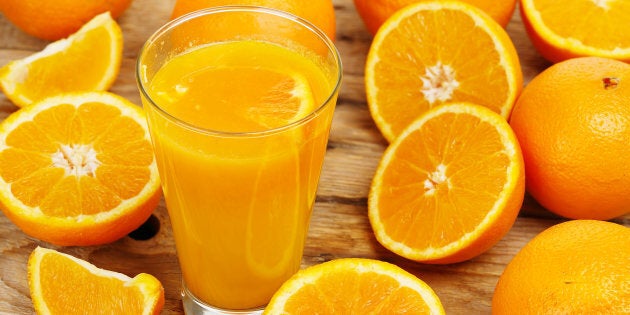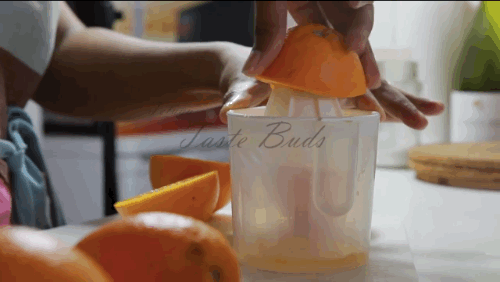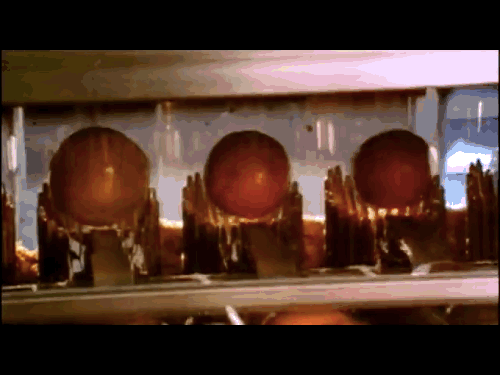
When we pick up a carton of “100 percent orange juice, not from concentrate” from the store, the image of oranges being carefully juiced is often what comes to mind. Something like this:

It’s suggested in the language, so it’s totally normal to have that assumption. But in most cases, it couldn’t be further from the truth. Our store-bought glass of morning OJ is actually made by pulverizing oranges in giant processing machinery to extract its juice.
The process of making commercial OJ looks more like this:

That’s not such a bad thing, but that’s not all. Alissa Hamilton’s book, Squeezed: What You Don’t Know About Orange Juice, explained back in 2010 that there’s a lot more work that goes into making commercial OJ. And it’s far from natural.
Because oranges only come into season during a specific time of year ― different times, depending on the variety ― and yet orange juice is craved all year round, orange juice companies have to store the juice for long periods of time. In order to do that without the juice spoiling, the juice is stored in million-gallon aseptic tanks and the oxygen is removed from it.
Here’s the thing you should know: when the oxygen is removed from the juice, so too are the natural chemicals found in the juice that give it that orange-y flavor and smell. Karen Mathis from the Florida Department of Citrus shared with HuffPost in 2011 a little insight on the process:
“During processing, natural components such as orange aroma, orange oil from the peel, and pulp may be separated from the orange juice. After the juice is pasteurized, these natural orange components may be added back to the orange juice for optimal flavor.”
In other words, before the juice is bottled it is re-flavored and re-scented with something that in the industry calls flavor packs, which are not a natural food product but rather are designed by flavor and fragrance companies. Yes, the same companies that make your perfume.
These flavor packs are why each carton of a brand of orange juice tastes exactly the same, despite the fact that this isn’t true of the fruit itself. And that’s also why each different brand of orange juice has its own unique flavor, because the company has invested in its own flavor pack.
The reason you don’t see flavor packs printed on ingredient lists is because food companies don’t legally have to, since the flavors are not made from artificial ingredients ― they’re made from citrus essence and oils ). While this isn’t as scary as some ingredients that can be found in our foods, it does illuminate the fact that OJ is a processed food.
Might want to start juicing your own oranges from now on.